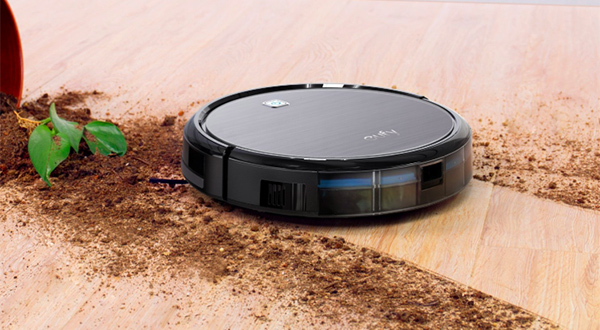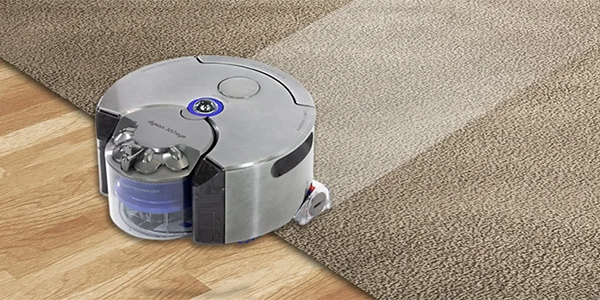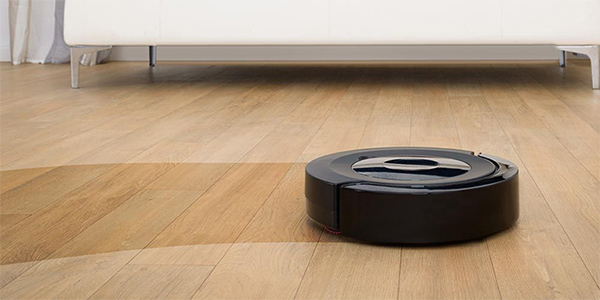
So, you’ve discovered robot vacuums but don’t understand how they work? How does it know where it’s been? How does it know when the job is done? Will it fall down the stairs? These are just some of the many questions people usually ask about the robots.
Robot vacuums are a revolutionary discovery as they deliver clean floors with far less effort and hassle than before. These require minimal or no assistance at all, depending on the particular model, so it’s safe to say that they’re handy.
However, many people often avoid getting a robot vacuum because they don’t understand how it works. They may or may not know the benefits it brings, but they struggle to understand the mystery behind it.
It’s time to discover what robot vacuums are and how most of them work. This will help you figure out why people are as obsessed with these small household life-changers.
The Sensor Technology
The technology behind vacuum cleaners had evolved from big and bulky machines to these tiny, handy robots. One of the most significant aspects of a quality robot is its sensor technology, as it makes a big difference in how the machine navigates through space.
Robots need to move freely through the room so that they can achieve the best results. However, to do so, a robot vac has to have sensors.
Sensors allow the machine to detect obstacles, measure how far it’s come, and to discover new parts that need cleaning. On top of that, these sensors trigger how your robot will behave in certain situations.
The technology varies since most manufacturers use different sensors, depending on the particular robot model. However, there are some basic ones commonly found with all vacs.

-Cliff sensors
Cliff sensors are probably the most important to look for if you have stairs in your home. If your vac falls down the stairs, it might not survive the fall, and it could even damage something else along the way.
These sensors send infrared signals to the floor surface all the time. If the signal doesn’t bounce back instantly, the robot assumes it has reached a cliff or a stair. It then changes its direction to avoid falling.
-Wall Sensors
Wall sensors don’t help avoid walls, as many people think. These actually help detect walls so that the robot can follow and clean along beside them.
This makes it easier for the robot to clean along the edges where the floor meets the wall. Also, the infrared light helps them clean without bumping and damaging the wall as some full-size vacs do.
-Obstacle Sensors
Most robot vacuums have obstacle sensors because it would be nearly impossible to operate without them. In your home, you have plenty of chair legs, sofas, long curtains, stray toys, coffee tables, and many more similar obstacles.
Sensors that are near the shock-absorbing bumpers allow the robot to maneuver through these obstacles without hitting or getting stuck in them. When the bumper hits an object, the robot knows to turn and go in the other direction.
However, several manufacturers have a different approach to this. Some robots, like Roomba, slow down near an obstacle. It only gently touches it without turning away immediately. As a result, Roomba can push through some barriers like curtains and bed skirts.

Mapping
Mapping abilities make all the difference in how efficient and hassle-free a robot is. New, quality robots use self-navigation systems and mapping technology.
Some vacs use onboard digital cameras that take pictures of ceilings, walls, stairs, furniture, doorways, and other landmarks. Other models use a laser range finder that measures the distance to objects.
In both cases, the vacuum uses this information with what it collects from sensors to build a map.
There are many advantages of mapping. When a robot has a floor plan, it can efficiently plot routes through any room. This is why some models move in straight lines while others just wander about.
This little feature also allows the vacuum to localize itself, so it knows where it’s been and where it has to go now. Also, it can return to its charging dock when the battery life is low. Overall, mapping is a vital feature that allows quicker and more thorough cleaning.
However, it also comes with some drawbacks. Camera mapping, in particular, doesn’t function as well in low-light conditions. In the case of laser mapping, dark walls tend to present an obstacle. Large mirrors that go down to your floor can trick your vacuum that the room is bigger than it is.

Other Features
Most high-end robots have automatic height adjustment settings, allowing them to go from hardwood to carpet and vice versa. However, some vacs can’t operate on plush, high-pile carpets and will get stuck in them.
Even with the smartest mapping, robots don’t always navigate as smoothly. They can tangle in cables and get stuck under furniture. After all, it’s a robot, so it’s not as smart all the time.
Keep in mind that most models have light indicators that tell you of maintenance or any other issue. Some light up when filters need maintenance while others light up when the dust bin is full.

Luckily, technology has come a long way, and today’s market is packed with some of the best robot vacuums for you to choose from. They provide the same, keeping your floors as clean as possible between two cleaning sessions with your full-size vac.
Whether you’ll choose the one with cliff sensors or not is up to you. It’s also up to you to choose among other features, depending on whether you need them or not.
However, keep in mind that a robot vacuum is meant to make cleaning easier for you. For this reason, look for the one that doesn’t require much assistance.
Make sure that it’s easy to use and navigate through your house regardless of whether you have stairs and floor-length mirrors or not.

Comments are closed.